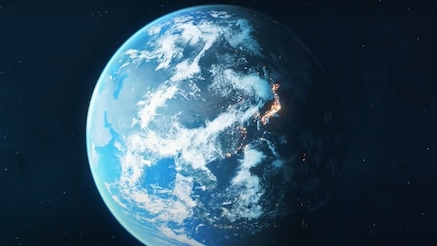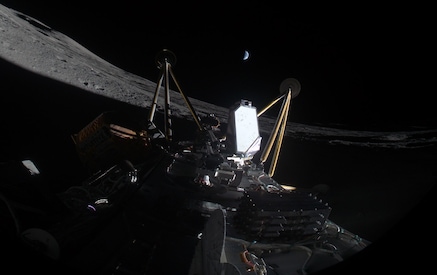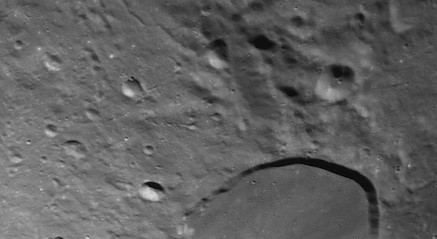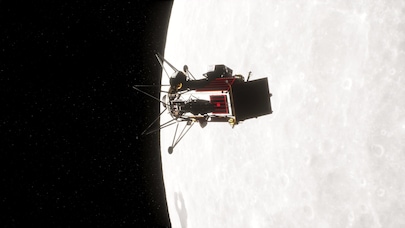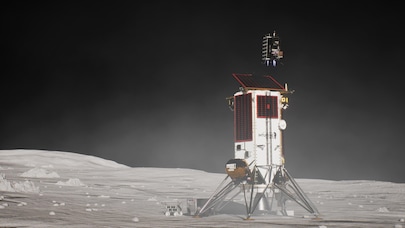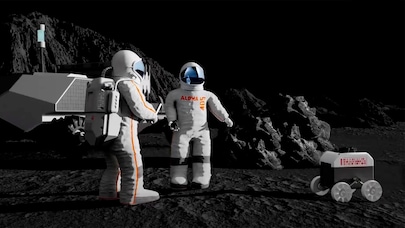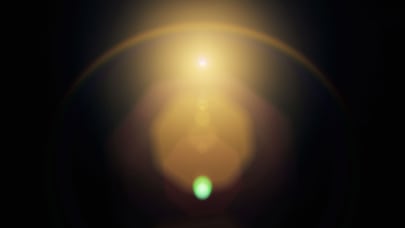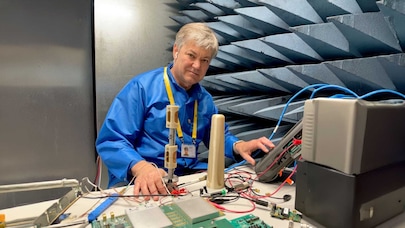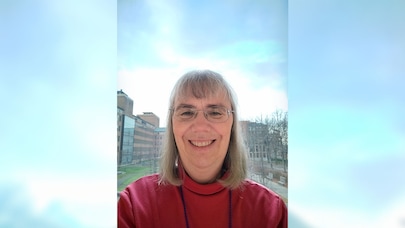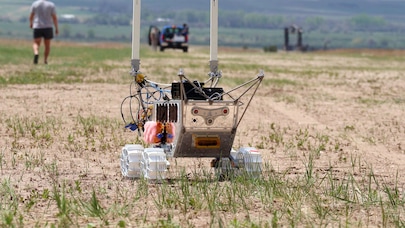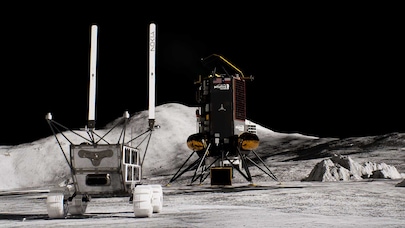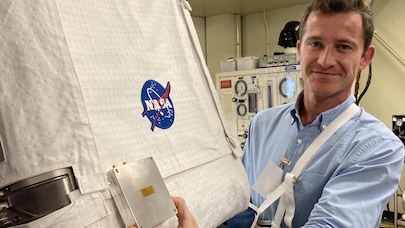Nokia is making history. When Intuitive Machines’ IM-2 mission voyages to the lunar south pole, Nokia will deploy a cellular network that will connect two mission vehicles. Nokia intends to prove that the same technology that connects billions of smartphones on Earth can meet critical communications needs on the Moon and Mars. As the mission unfolds, we will update this page with the latest details.
Mission videos
Watch the latest developments in Nokia’s voyage to the Moon.

IM-2 mission checklist
Our detailed guide to every aspect of the IM-2 mission, from the launch and voyage to landing and lunar surface operations
Mission tracker
10 March
Nokia announced it successfully delivered the first cellular network to the Moon as part of the Intuitive Machines IM-2 mission to the lunar south pole region. Nokia successfully validated key aspects of the network’s operation, including the transmission of operational data to Intuitive Machines’ ground station and Nokia’s mission control center on Earth and the activation of multiple communication solution components. The IM-2 mission is part of NASA’s Commercial Lunar Payload Services initiative and Nokia’s technology demonstration was funded in part by NASA’s Tipping Point initiative.
Nokia was unable to place the first cellular call on the Moon because of significant power limitations due to the orientation of the Athena lander’s solar panels after landing. However, Nokia Bell Labs’ Lunar Surface Communications System (LSCS) was engineered for optimized power consumption, and in a 25-minute window in which it was able to receive power, the LSCS successfully completed multiple tests. These achievements serve as key steps toward proving cellular technologies meet the mission-critical communications needs of lunar exploration and beyond.
For more information, please see this press release from Nokia.
8 March
As part of Intuitive Machines IM-2 mission, Nokia Bell Labs delivered the first cellular network to the Moon and validated key aspects of the network’s operation. On March 6, Nokia successfully powered up the Network in a Box (NIB), which received telecommands from and transmitted operational data to Intuitive Machines’ ground station on Earth and the Nokia mission control center. NIB telemetry data confirmed a successful operational “on air” state with all system components fully functional. The NIB operated on the lunar surface for about 25 minutes while power was supplied to the system with no service disruptions.
Unfortunately, Nokia was unable to make the first cellular call on the Moon due to factors beyond our control that resulted in extreme cold temperatures on our user device modules. These initial milestones, however, are important steps toward proving that cellular technologies can meet the mission-critical communications needs of future lunar missions and space exploration. We are proud of our partnership with NASA, Intuitive Machines and Lunar Outpost on this pioneering mission.
For more information, please see this press release from NASA.
6 March
Intuitive Machines and NASA hosted a press conference earlier today where they discussed the status of the IM-2 mission, its technology demonstrations and its science opportunities. You can view the full press conference here.
6 March
Today is the big day! Athena is scheduled to make a landing attempt today at 12:32 pm ET. Landing coverage is scheduled to start at 11:30 am ET. You can watch live by accessing the lunar landing link at the top of this page.
Athena completed descent orbit insertion (DOI) at 4:33 am ET. This maneuver brought Athena into an elliptical orbit around the Moon, allowing the lander to pass approximately 10 km above IM-2’s landing site in the Mons Mouton region of the lunar south pole. Intuitive Machines flight controllers are now gathering data and checking the lander’s landing systems for accuracy.
5 March
As of 9 AM ET, Athena had completed 24 of her planned 39 orbits, waiting for the sun to rise on her Mons Mouton landing site. In this image, you can see the cratered lunar landscape captured by Athena’s Terrain Relative Navigation Camera.
Intuitive Machines is now preparing for Athena’s next planned maneuver, descent orbit insertion (DOI), which is designed to lower her orbit for her landing attempt at 12:32 pm ET on March 6. In DOI, Athena will fire her main engine again to change her current circular orbit into an elliptical orbit that will allow the lander to pass approximately 10 km above IM-2’s landing site. Live landing coverage is scheduled to start at 11:30 am ET on March 6. You can watch all the action by accessing the lunar landing link at the top of this page.
[Image credit: Intuitive Machines]
4 March
Intuitive Machines flight controllers have calibrated Athena’s landing navigation cameras, which are designed to autonomously track her position and detect hazards during landing. The bottom of the lander is now oriented toward the Moon, resulting in some stunning images of the lunar surface.
Intuitive Machines compiled a sequence of images of Athena passing over the Moon's south pole region near her intended landing site, Mons Mouton — one of NASA's designated human landing sites for the Artemis campaign.
[Image credit: Intuitive Machines]
3 March
Intuitive Machines has shared new images of Athena orbiting the Moon. The Nova-C lander is now in a low circular orbit, which means it is approximately 100 km above the lunar surface and is completing a complete revolution around the Moon roughly every two hours. Flight controllers expect Athena to complete 39 lunar orbits before her south pole region landing site has adequate sunlight to power surface operations.
Intuitive Machines expects a landing opportunity on March 6 at 12:32 pm ET. Live landing coverage is scheduled to start at 11:30 am ET. Check back on this page as we get closer to landing for links to that coverage.
(Image credit: Intuitive Machines)
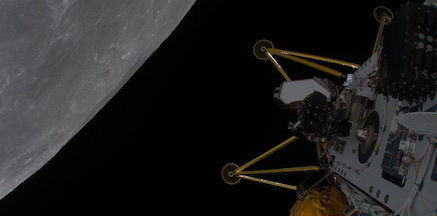
3 March
Athena is now orbiting the Moon! Intuitive Machines’ lander burned its main engine for 492 seconds at 7:27 am ET, executing a maneuver known as lunar orbit insertion (LOI).
Flight controllers are now planning to analyze data to verify the lander’s targeted circular orbit and confirm Athena’s expected landing time. Athena continues to be in excellent health. Over the next two days the lander is expected to send images from lunar orbit selfies before a landing attempt on March 6.
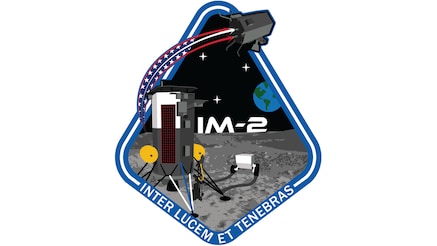
2 March
We have started receiving telemetry data from the Athena lander, allowing Nokia engineers to monitor our network equipment’s status during the long journey to the Moon. Though the Lunar Surface Communications System (LSCS) will remain powered off until it reaches the lunar surface, this telemetry data tells us the temperature of the LSCS system and how Athena's heating systems are performing. Currently all conditions are nominal.
Intuitive Machines has completed its second trajectory correction maneuver (TCM), further refining Athena’s trajectory to ensure the mission stays precisely on course. Pictures being sent back to Earth from Athena show just how far the mission has voyaged. In this image, Earth is no longer a looming sphere. Instead, it’s a tiny marble.
(Image credit: Intuitive Machines)
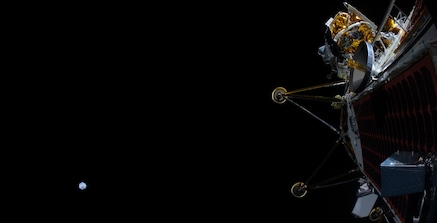
1 March
Approximately 152,104 km from the Moon, Athena has conducted several navigation activities. She has sent a sequence of photos while using the stars to determine her position in space. On Feb. 28, Intuitive Machines initiated Athena’s first trajectory correction maneuver (TCM) to refine the lander’s trajectory in preparation for entering lunar orbit.
Athena burned her mainstage engine at full thrust for 6 seconds. Data from the TCM confirmed Athena hit her 9.5 m/s target with approximately 0.38 m/s accuracy, and propulsion mixture ratios, mass flow rate, and temperature were as predicted. According to Intuitive Machines, the TCM was nominal, and Athena continues to be in excellent health. In this video, you can see Intuitive Machines flight controllers as they execute the TCM.
[Video credit: Intuitive Machines]
28 February
Athena is approximately halfway to the Moon. Intuitive Machines flight controllers are now preparing for trajectory correction maneuvers (TCMs). Athena will briefly fire her main engine to adjust her trajectory, ensuring that the mission is precisely on course.
Intuitive Machines will perform these TCMs periodically on Athena’s journey as IM-2 prepares for lunar orbit insertion. At that stage Athena will flip over and begin burning her engine once more to reduce her speed for entering lunar orbit.

27 February
Intuitive Machines has shared some of the first images taken from its Athena lander. In this image, Athena’s camera looks back at Earth as she begins day one of her weeklong journey to the Moon. Nokia’s network is clearly visible in far righthand side of the photo. The disk-shaped thermal radiator — which will regulate the network’s temperature on the Moon — protrudes from Athena’s upper panel. Just below the radiator is the “network in a box,” which contains the base station, radio and core elements of Nokia’s Lunar Surface Communications System (LSCS).
Athena established a stable attitude, solar charging, and radio communications contact with the Intuitive Machines mission operations center in Houston, Texas, after liftoff on February 26. The lander is in excellent health and preparing for a series of planned main engine firings to refine her trajectory ahead of lunar orbit insertion, which is planned for March 3.
(Image credit: Intuitive Machines)

26 February
Lift off! At 7:17 pm ET, the Intuitive Machines Athena lander, carrying Nokia’s lunar network, lifted off aboard a SpaceX Falcon 9 rocket.
Athena is on her way to Moon, starting an 8-day journey that will culminate with her landing in the Mons Mouton region of the lunar south pole.
(Image credit: SpaceX)
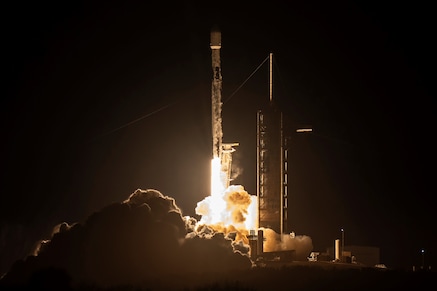
26 February
We have an update on launch timing! Liftoff of the IM-2 mission is targeted for a multi-day launch window that opens at 7:16 pm ET today. SpaceX’s Falcon 9 is vertical on pad 39A at Kennedy Space Center in Florida.
Intuitive Machines and SpaceX have analyzed the data from the lunar lander fueling test for the IM-2 mission and determined the testing campaign is complete.
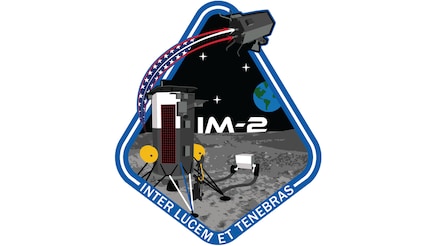
20 February
Intuitive Machines announced that its IM-2 mission Nova-C class lunar lander, Athena, completed all integration milestones and is safely encapsulated within SpaceX’s payload fairing in preparation for launch. In coordination with SpaceX, launch of Intuitive Machines’ IM-2 mission is targeted for a multi-day launch window that opens no earlier than February 26.
Athena, of course, carries Nokia’s Lunar Surface Communications System (LSCS), which will make the roughly one-week voyage to the Moon’s south pole. There, Nokia will deploy the first cellular network on the Moon.
(Image credit: SpaceX)
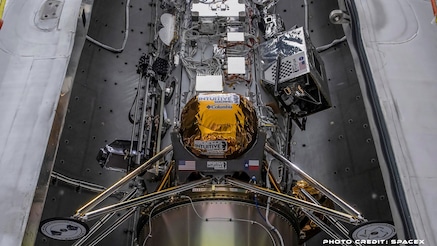
28 January
Intuitive Machines delivered the IM-2 lunar lander, named Athena, to Kennedy Space Center in Cape Canaveral, Fla. Athena is an Intuitive Machines Nova-C class lander, and she will carry Nokia’s cellular network, along with IM-2’s mission vehicles, instruments and equipment, to the Moon’s south pole.
In coordination with SpaceX, the liftoff of the IM-2 lunar mission is targeted for a four-day launch window that opens no earlier than February 26. In case of unfavorable launch conditions, such as inclement weather, backup opportunities will be determined based on the lunar blackout window and other factors.
(Image credit: Intuitive Machines)
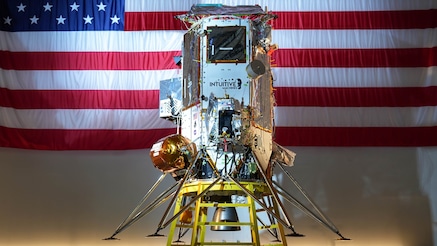
7 January
Nokia and Intuitive Machines announced the final integration of the Lunar Surface Communications System (LSCS) into Athena, the Intuitive Machines’ Nova-C class lander for IM-2 . Athena will carry the LSCS to the Moon’s south pole, where Nokia intends to establish the first cellular network on the Moon.
After months of testing and validation with Nokia Bell Labs, Intuitive Machines engineers installed the LSCS “network in a box” into one of Athena’s upper carbon-composite panels, taking multiple precautions to ensure that the network will safely survive the launch, voyage and landing, as well as operate optimally on the lunar surface.
(Image credit: Intuitive Machines)
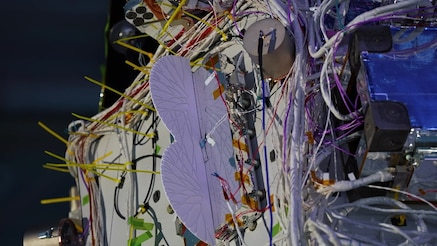

Networking the Moon and beyond
Learn more about the mission, Nokia Bell Labs’ technology and the people behind it




